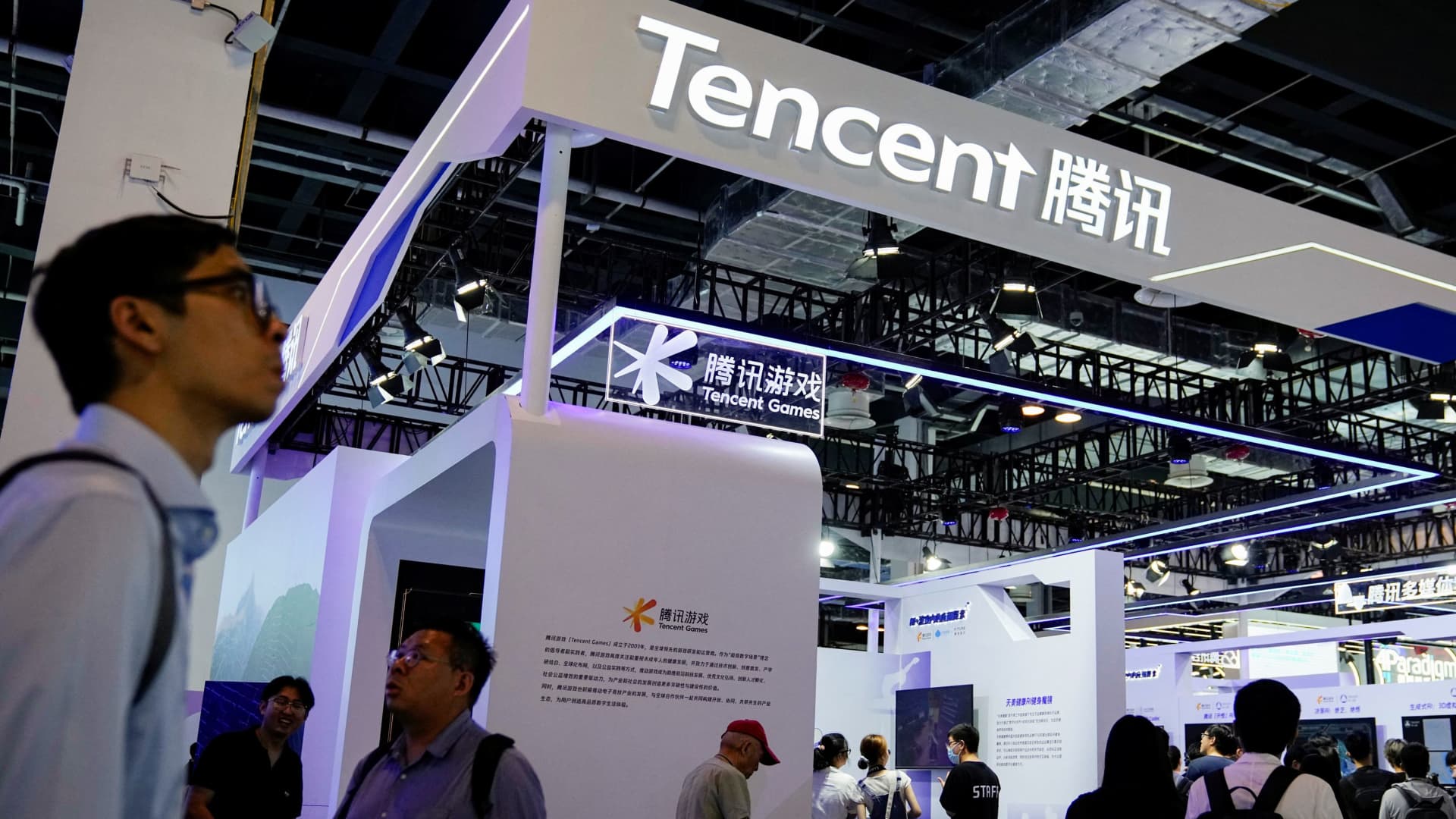Products You May Like
BEIJING — Corporate earnings releases are picking up on a few bright spots for China’s consumer in a competitive market where people are less willing to open their wallets.
JD.com, Tencent and Alibaba this month reported results for the three months ended June that pointed to a steady pick-up in consumer spending that quarter, but with less clarity on whether that growth has continued.
Here’s where companies said they saw consumer-related growth, according to public disclosures and FactSet transcripts of earnings calls:
JD.com
Electronics and home appliance revenues rose by 11.3% to 152.13 billion yuan ($20.98 billion) in the three months ended June.
But general merchandise revenue fell by 8.6% from a year ago to 81.72 billion yuan.
Marketing revenue rose by 8.5% to 22.51 billion yuan.
Tencent
Livestreaming e-commerce saw 150% year-on-year growth in gross merchandise value in the second quarter to an unspecified number. GMV measures total sales value over a certain period of time.
On an annualized basis, that livestreaming GMV “is in the tens of billions” yuan.
WeChat Mini program e-commerce has GMV “in the trillions” of yuan on an annualized basis. GMV for physical products has exceeded 1 trillion yuan on an annualized basis.
Advertising revenue across all categories — except automotive — is up double-digits from a year ago in recent weeks. Ad sales rose by 34% to 25 billion yuan in the quarter ended June.
Overall, Tencent reported earnings for the quarter that missed expectations, but showed a third-straight quarter of revenue growth.
Alibaba
Direct China commerce sales, primarily from Tmall Supermarket and Tmall Global, grew by 21% year-on-year to 30.17 billion yuan.
The overall Taobao and Tmall Group saw revenue grow by 12% to 114.95 billion yuan.
A recovery in offline shows and the movie theater box office boosted Alibaba’s ticketing and movie studio units. Video platform Youku also saw subscription revenue rise. In all, digital media and entertainment revenue surged by 36% year-on-year to 5.38 billion yuan — and its first profitable quarter.
Local services revenue rose by 30% to 14.5 billion yuan. That was driven by orders on food delivery app Ele.me and growth in Alibaba’s map app Amap, which sells services such as ride-hailing and hotel booking.
Alibaba management did not provide much detail on the state of the consumer since the end of June.
Overall, Alibaba’s earnings soundly beat expectations for the quarter.
China consumption amid sluggish growth
Data for July have pointed to a slowdown in China’s economy, including a modest 2.5% year-on-year increase in retail sales.
Theme parks, however, have done well as tourism has picked up domestically.
Shanghai Disney saw record high revenue, operating income and margin during the latest quarter, the company said.
Universal Studios Beijing “enjoyed its most profitable quarter,” Comcast said. The park opened in September 2021, during the pandemic.
Listed companies don’t capture all major channels for online spending in China. ByteDance, which is not publicly listed, has become another e-commerce platform through its Douyin app, the local version of TikTok.
Consumers in China spent 1.41 trillion yuan in purchases from merchants on Douyin, up 76% from the previous year, according to The Information. ByteDance did not immediately respond to a request for comment.
ByteDance’s smaller rival Kuaishou is set to release earnings Tuesday, as are Chinese tech giant Baidu and video content platform iQiyi. E-commerce giant Pinduoduo has yet to announce when it’s scheduled to release earnings.
Other companies in China, or those with exposure to China, have showed some pockets of growth, albeit compared to a low base in 2022 when the metropolis of Shanghai was locked down for two of the three months in the second quarter.
Here’s what some have said so far:
Adidas
Revenues in Greater China grew 16% in the second quarter, reflecting double-digit sell-out growth in both wholesale and its own retail outlets.
Anta
The Chinese sportswear company said its Anta brand retail sales value rose by high single digits in the second quarter from a year ago. Its Fila brand saw high teens growth year-over-year. The company’s Descente, Kolon Sport and other brands saw growth of 70% to 75% year-on-year.
Apple
Apple CEO Tim Cook said the iPhone maker saw “an acceleration‘’ in China, with 8% year-on-year quarterly sales growth to $15.76 billion. That’s a reversal of a 3% year-on-year drop in the prior quarter.
The company said it saw “a June quarter record in Greater China” in the wearables, home and accessories category, as overall product group saw sales increase by 2% year-on-year to $8.3 billion.
Li Ning
The company said June quarter retail sell-through of Li Ning point of sale, excluding its “young” brand, increased by mid-teens on a year-on-year basis.
Starbucks
China comparable store sales increased 46%, but the average ticket size was slightly smaller, down 1%.
— CNBC’s Arjun Kharpal contributed to this report.
Disclosure: Comcast is the owner of NBCUniversal, parent company of CNBC.
